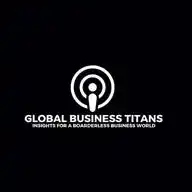
Global Business Titans
February 2, 2025 at 05:05 PM
Why People Buy: The Hidden Psychological Triggers Behind Every Purchase
The Invisible Forces Behind Every Buying Decision
Have you ever wondered why you chose one brand over another?
Why do some people line up for hours to buy a new iPhone, even when their old one still works perfectly? Why do others spend thousands on a designer handbag when a $50 alternative would do the same job?
The answer is not logic—it’s psychology.
People don’t buy products. They buy emotions, identity, and solutions to their deepest desires or fears. Understanding these hidden triggers can transform the way you sell, market, and position your business.
Let’s break down the psychological triggers that drive every purchase, backed by research and real-world examples.
1. The Core Motivations: What Drives People to Buy?
Every purchase comes down to one fundamental question:
"Will this product/service make my life better?"
The way people define “better” varies, but it often falls into these core motivations:
📌 Example: Apple’s marketing taps into status, self-expression, and aspiration. They don’t sell iPhones—they sell the idea of being innovative, successful, and part of an elite group.
2. The Hidden Psychological Triggers That Influence Buying Decisions
Now that we know what motivates people, let’s break down the key psychological triggers that get them to take action.
1️⃣ The Power of Social Proof (The Bandwagon Effect)
People look to others when making decisions—if others trust a product, they feel safer buying it too.
💡 Examples of Social Proof in Action:
~Amazon highlights “#1 Best Seller” to increase trust.
~Restaurants with long lines attract more customers, assuming it must be good.
~Testimonials, case studies, and influencer endorsements build credibility.
📌 Real-World Example: When Apple launched AirPods, many mocked them for looking strange. But once celebrities and influencers started wearing them, demand skyrocketed.
🔹 How to Apply This in Business:
✔ Display customer reviews & ratings prominently.
✔ Use case studies and success stories in sales.
✔ Showcase social media engagement (e.g., “500,000 people love this product!”).
2️⃣ Scarcity & Urgency (The Fear of Missing Out - FOMO)
People hate missing out on opportunities. If something seems limited or exclusive, they feel an urge to buy before it's gone.
💡 Examples of Scarcity in Action:
~“Only 3 left in stock!”
~“This deal expires in 24 hours!”
~“Limited edition—never restocking again!”
📌 Real-World Example: Luxury brands like Rolex and Birkin bags intentionally limit supply to make their products more desirable.
🔹 How to Apply This in Business:
✔ Offer limited-time discounts.
✔ Use countdown timers on sales pages.
✔ Release exclusive, time-sensitive offers.
3️⃣ Authority & Expert Endorsements (The Trust Factor)
People trust experts, authority figures, and established brands over unknown sources.
💡 Examples of Authority in Action:
~“Recommended by 9 out of 10 dentists.”
~“Used by Fortune 500 companies.”
~Certifications & awards (e.g., “SAZ Approved,” “Forbes Recognized”).
📌 Real-World Example: When Oprah recommends a book, it instantly becomes a bestseller because of her authority.
🔹 How to Apply This in Business:
✔ Get endorsements from industry leaders.
✔ Highlight media features or partnerships.
✔ Showcase certifications & credentials.
4️⃣ Loss Aversion (People Fear Losing More Than They Desire Gaining)
Studies show that people are twice as motivated to avoid loss than they are to gain something of equal value.
💡 Examples of Loss Aversion in Action:
~“Act now or miss out forever!”
Free trials (“Try it risk-free—cancel anytime.”)
Refund guarantees (“If you don’t love it, get 100% of your money back.”)
📌 Real-World Example: Netflix removes risk by offering a free trial—once you’re in, you’re less likely to cancel.
🔹 How to Apply This in Business:
✔ Offer free trials & money-back guarantees.
✔ Frame your offer as avoiding a loss rather than gaining something new.
✔ Use urgency-based messaging (e.g., “Don’t miss this opportunity!”).
5️⃣ The Power of Identity & Tribal Marketing
People buy products that reinforce who they are or who they want to be.
💡 Examples of Identity in Action:
~Harley-Davidson doesn’t sell motorcycles—it sells rebellion & freedom.
~Nike’s “Just Do It” appeals to athletes & achievers.
~Tesla attracts people who see themselves as eco-conscious innovators.
📌 Real-World Example: Apple vs. Android users—Apple’s marketing makes people feel like part of an exclusive, premium club, creating fierce brand loyalty.
🔹 How to Apply This in Business:
✔ Align your brand with a strong identity.
✔ Speak directly to a specific audience.
✔ Create a community or movement around your brand.
Mastering the Psychology of Buying
When you understand why people buy, you stop selling products and start selling transformation, status, security, and self-expression.
Key Takeaways:
✔ People buy emotionally first, then justify logically.
✔ Social proof builds trust—show evidence that others love your product.
✔ Scarcity & urgency make people act fast.
✔ Authority makes people feel safe buying.
✔ Loss aversion is a powerful motivator—people hate missing out.
✔ Identity-driven brands create loyal customer tribes.
🚀 Next Steps: How to Use This in Your Business
✅ Test different messaging—which emotions and triggers drive the most conversions?
✅ Leverage social proof—get testimonials, case studies, and influencer endorsements.
✅ Create urgency—use limited-time offers and exclusive deals.
✅ Align your brand with a strong identity—what do your customers want to be known for?
CLICK ON THE FOLLOWING LINK TO JOIN OUR GLOBAL BUSINESS TITANS WHATSAPP CHANNEL :